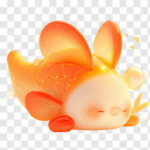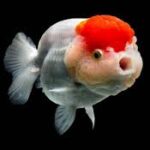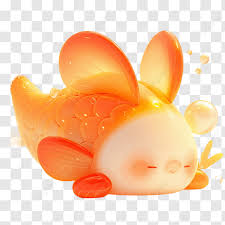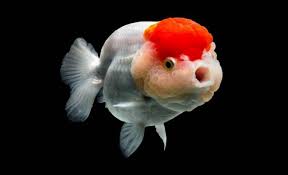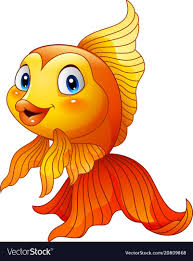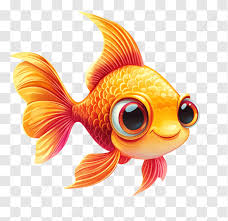Understanding the Benefits, Risks, and Safe Practices
Introduction
Chinese fresh tea, celebrated for centuries across Asia, is more than just a beverage—it’s a cultural ritual, a health supplement, and a daily habit for millions. With the rise of holistic lifestyles and interest in traditional wellness practices, many parents wonder: Is Chinese fresh tea safe and suitable for children?
This comprehensive article explores the types of Chinese fresh tea, their potential benefits for young individuals, the possible risks, and age-appropriate guidelines for children consuming tea. We’ll also explore expert opinions and traditional perspectives from Chinese medicine to give you a balanced view.
1. Understanding Chinese Fresh Tea
What Is Chinese Fresh Tea?
“Fresh tea” refers to newly harvested, minimally processed leaves, typically from the Camellia sinensis plant. In China, these teas often include:
- Green Tea (e.g., Longjing, Biluochun)
- White Tea (e.g., Baihao Yinzhen)
- Light Oolong Tea (e.g., Tieguanyin)
- Mild Flower-Scented Teas (e.g., Jasmine tea)
Unlike black or fermented teas, these varieties maintain a light, clean flavor and contain higher levels of natural antioxidants.
Why the Interest in Tea for Kids?
Parents are increasingly looking for alternatives to sugary drinks, sodas, or synthetic juices. Fresh Chinese tea—especially when unsweetened—seems like a natural, healthier option.
But is it really suitable for children?
2. Nutritional and Health Considerations for Children
Key Components in Chinese Fresh Tea:
| Compound | Function | Concern for Kids? |
|---|---|---|
| Caffeine | Stimulates the brain & alertness | Yes — may affect sleep & behavior |
| L-theanine | Calms nerves, reduces anxiety | Potentially beneficial |
| Catechins (EGCG) | Antioxidant, supports immunity | Generally safe in moderation |
| Fluoride | Supports dental health | Excessive intake may affect bones/teeth |
3. Potential Benefits of Chinese Fresh Tea for Children
When consumed in small, controlled quantities, certain Chinese teas may offer benefits for children:
1. Boosting Immunity
White tea and green tea contain antiviral and antibacterial properties. Mild infusions may help children ward off infections, especially during cold seasons.
2. Supporting Digestion
Light teas like jasmine or oolong may help reduce bloating and support digestive health after meals—especially helpful for children with minor digestive issues.
3. Calming Anxiety and Hyperactivity
The amino acid L-theanine, especially present in green tea, can promote relaxation without sedation. In moderation, it may benefit children with restlessness or mild anxiety.
4. Risks of Giving Chinese Fresh Tea to Children
1. Caffeine Sensitivity
Most Chinese teas contain natural caffeine—even light ones. Children are more sensitive to caffeine than adults, and it can lead to:
- Insomnia or difficulty falling asleep
- Increased heart rate or jitteriness
- Reduced appetite
- Hyperactivity or anxiety
Green tea, for example, contains about 20–35 mg of caffeine per cup—roughly half the amount in a cup of coffee. That may still be too much for younger children.
2. Interference with Iron Absorption
Tea contains tannins, which can bind with non-heme iron (from plant sources) and reduce absorption. This is especially important for vegetarian children or those at risk of iron deficiency.
Tip: Avoid giving tea around mealtime, especially for younger kids.
3. Allergic Reactions or Additives
Though rare, some teas are scented or blended with flowers, herbs, or flavorings that may cause allergic reactions or stomach upset in children. Always check for:
- Additives
- Preservatives
- Artificial flavorings
5. What Traditional Chinese Medicine (TCM) Says
In Traditional Chinese Medicine, teas are classified by energy (cooling, warming) and function (stimulating, harmonizing).
TCM View on Children and Tea:
- Children are believed to have a “delicate spleen and stomach”, meaning they are sensitive to cold or overly stimulating substances.
- TCM generally recommends light, warm, and calming teas only when necessary and in very small amounts.
Best TCM-approved teas for kids (in moderation):
- Chrysanthemum tea – cooling, calming
- Gouqi (goji berry) tea – supports vision and immunity
- Mild Jasmine tea – aromatic, digestive support
6. Expert Recommendations on Tea for Children
Age Guidelines:
| Age Group | Tea Recommendation |
|---|---|
| Under 2 years | Not recommended |
| 2–5 years | Only herbal, caffeine-free teas (e.g., chrysanthemum) |
| 6–10 years | Small amounts (50–100ml) of weak green or white tea |
| 11–16 years | Can consume moderate amounts (1 cup daily), avoiding late afternoon or evening |
Preparation Tips:
✔ Always use light infusions (1g tea per 250ml water)
✔ Steep for shorter times (1–2 minutes)
✔ Serve warm, not hot
✔ Avoid sugar, honey, or milk for young children
7. Alternatives to Traditional Tea for Kids
If you’re worried about caffeine or tannins, try these Chinese-inspired caffeine-free options:
- Chrysanthemum flower tea – floral, soothing
- Dried apple & goji berry infusion – naturally sweet
- Roasted barley tea (mugicha) – popular in East Asia, caffeine-free
- Lotus leaf tea – gentle detox and digestion support
These alternatives provide the ritual and comfort of tea drinking without the risks.
8. Real-World Scenarios: Can Kids Drink Tea with Family?
Family Tea Culture
Many Chinese families include tea drinking as a social and cultural tradition. Children are often served light infusions in small cups during:
- Family dinners
- Festivals (e.g., Lunar New Year)
- Ancestral offerings or tea ceremonies
In these cases, the focus is not on the health benefits, but the symbolic meaning of respect and connection.
Tip: Let children join by drinking herbal or barely infused teas in tiny cups. This builds cultural pride while avoiding caffeine overload.
9. Summary: Should Children Drink Chinese Fresh Tea?
| Criteria | Recommendation |
|---|---|
| Under age 6 | Best to avoid or use herbal only |
| 6–10 years | Allow weak, light tea occasionally |
| 11–16 years | One cup daily is generally safe |
| Health conditions? | Consult pediatrician first |
| Preferred teas | White tea, mild green tea, chrysanthemum |
10. Final Thoughts and Practical Tips for Parents
Tea can be part of a healthy and balanced routine for children—if chosen carefully and consumed in appropriate amounts. The key lies in:
- Understanding the type of tea
- Monitoring caffeine intake
- Teaching children to appreciate natural flavors without sweeteners
- Incorporating tea into family bonding rituals
Tips for Introducing Tea to Kids:
- Start with herbal or floral infusions like chrysanthemum or goji.
- Make it fun—use a special cup or involve them in the steeping process.
- Serve during afternoon snack time rather than near bedtime.
- Encourage sips, not full cups.
Conclusion
Chinese fresh tea, while packed with flavor, culture, and health-promoting compounds, isn’t a one-size-fits-all beverage—especially when it comes to young children. With proper guidance, age-appropriate choices, and moderation, tea can become a safe, enjoyable part of your child’s healthy lifestyle and cultural education.
🥢✨ Tea is tradition, wisdom, and warmth—shared best when passed on mindfully to the next generation. 🍵
